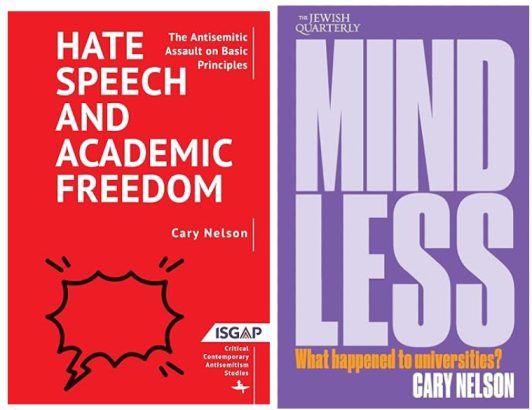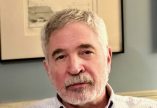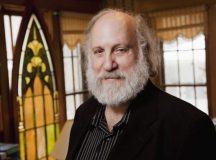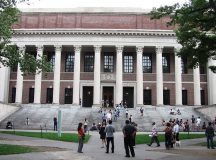At the end of the first chapter of Hate Speech (62), Cary Nelson presciently observes, ‘Matters are likely to get worse.’ That was written in July of 2023. In the introduction to Mindless, speaking of the unprecedentedly vehement and globalised anti-Israel student encampment movement—’the most rapid politicisation of higher education in our lifetimes’—he explains that the origins ‘date back long before April 2024.’ (1, 2) The common theme of the two books is that antisemitic radical anti-Zionism is central to the crisis of American higher education. Extreme anti-Israel activist faculty have captured broad swaths of the academy and thereby secured a change in the basic rules of the academic system, to the detriment not just of those who disagree with them, but of academic freedom itself and indeed the very idea of a university. Although the two books arise from the same concern and cover much of the same ground, they are complementary rather than duplicative or redundant. Hate Speech takes a deeper dive into both the intellectual-ideological evolution of radical ‘anti-Zionism’ and the evolving theory and practice of academic freedom, whereas the briefer Mindless takes a broader view and devotes more attention to students and the overall academic response to October 7.
It is common for a reviewer to laud the author as the ideal person to have written the book under consideration, but in this case the accolade is truly deserved. The unique qualifications that Nelson brings to these volumes account for their unique strengths. Whereas most authors writing on academic freedom and hate speech come from the one field or the other, Nelson is distinctive in being equally at home in both. A longtime leader as well as commentator in the defense of academic freedom, he served 20 years in the elected leadership of the American Association of University Professors (AAUP), including the presidency (2006-12). A prolific and respected commentator on the place of antisemitism in relation to the Israeli-Palestinian conflict, he is the author or editor of six earlier volumes as well as numerous articles on the subject. He will be no stranger to readers of Fathom, and in fact, some of the chapters in Hate Speech first appeared in this forum.
Anti-Zionism and Antisemitism
The twin foci of the books, if one may put it this way, are two acronyms: AAUP and IHRA. The American Association of University Professors, founded in 1915, is the leading advocate for and definer of academic freedom in the US. In recent years, however, it has moved away from its emphasis on classical liberal principles to embrace an increasingly ideological professoriate whose most passionately pursued cause is anti-Zionism. This poses a particular challenge for the academy because, in an age in which overt religious or social hostility to Jews is unacceptable, most anti-Jewish sentiment tends to be expressed in the context of the Israeli-Palestinian conflict but to the nonspecialist observer may not be readily identifiable as such.
Recent years have therefore seen an increasing debate in both civic and academic circles over just what constitutes antisemitism. It was for precisely this purpose that the International Holocaust Remembrance Alliance working definition of antisemitism was developed (derived from one created by the European Monitoring Centre on Racism and Xenophobia [EUMC]). It is today the international gold standard definition, adopted or endorsed by over 40 nations and 1200 organizations. It is not legally binding and, rather, intended to serve only as an educational and diagnostic tool, but because it highlights forms of anti-Israel discourse among its potential examples, it has become controversial. This, despite the caveat, ‘taking into account the overall context,’ and the affirmation that ‘criticism of Israel similar to that leveled against any other country cannot be regarded as antisemitic.’ In the current campus debates, we therefore frequently encounter the charge that it is a dangerous or (preferred term:) weaponised definition—the implication being that Jews wield the accusation of antisemitism frivolously and in bad faith, to silence criticism of Israel: what David Hirsh famously termed ‘The Livingstone Formulation’ (1, 2). And here, ironically, we are back in the territory of classic antisemitism.
Nelson’s contention, shared by many though not all scholars of antisemitism, is that, since October 7, the distinction between antisemitism and anti-Zionism has for all practical purposes disappeared. Whereas the mainstream left energetically debated and increasingly criticised Israel’s actions (legitimately so), the newly dominant radical anti-Zionism, judging Israel irredeemable by its nature as well as its actions, concludes that it can only be eliminated, not reformed. The charge of genocide seals the argument. No such state has a right to exist. There is thus no need for the hallowed tradition of academic debate and discussion, for there can be no other legitimate opinion.
Two beliefs make matters worse, Nelson claims. First, for many in the anti-Zionist camp, the ‘tiny Jewish state’ has become ‘the world’s core problem.’ (Mindless, 16) Second, because the vast majority of the world’s Jews support the existence of Israel or otherwise consider it a component of their identity (their place of national and cultural origin, the home of nearly half of their coreligionists), they must be regarded as complicit in its crimes.
Anti-Zionism, Antisemitism, and Academic Freedom
This brings us to the question of academic freedom. Since its inception in 1915, the AAUP opposed the introduction of extraneous political issues into the classroom, but then, in 1970, in an era of political protest, softened its stance in cases in which the intervention was not ‘persistent.’ In 2006, Nelson spearheaded a change that allowed explicit political advocacy. In both books, as, for instance, in the semi-autobiographical introduction to Hate Speech (1-16), he confesses that he was in retrospect naïve. (Daniel Gordon assesses Nelson’s contribution to evolving doctrine in his excellent What is Academic Freedom? A Century of Debate, 1915-Present, 107-117). Although the aim was responsible debate rather than indoctrination, the floodgates were opened, and the rise to power of the activist far left brought about a series of even more fateful changes.
Established principles of academic freedom held that scholarly statements consistent with the norms of a given discipline were protected. Personal extramural statements (those made publicly but in the capacity of a private citizen) related to one’s teaching and research fields could be considered professional and subject to professional scrutiny. As radical anti-Zionist antisemitism has come to dominate major sectors of the academy (particularly the humanities and social sciences), a dramatic two-fold change has occurred. First, many of these views have become the disciplinary consensus. The traditional idea was that the system would be self-correcting, but as disciplines have fragmented into ever smaller and often ideologically defined subdisciplines, Nelson argues, the chances for challenges to any current consensus have diminished. Second, in response to a controversy over the retraction of a job offer to Stephen Salaita due to his antisemitic anti-Zionist social media activity in 2014, the AAUP reversed longstanding policy and decreed all extramural faculty statements—not, as formerly, just those outside the discipline—to be protected by academic freedom.
This state of affairs has grave implications for hiring policies—which have ever more to do with the classroom and campus climate. When departments and programs become politicised—especially when they feel entitled to address issues outside their nominal remit—the result, Nelson says, is dilettantism and anti-intellectualism. Another result is an absurd situation. Historians can tweet Holocaust denial but be sanctioned only for teaching or publishing that stance. And meanwhile, a parent or student is forced to take on faith the assurance that an animus expressed in social media would play no role in the classroom.
Nelson sees the abandonment of the longstanding policy on extramural speech as motivated by the desire to open space for anti-Israel activity as well as concern for faculty freedoms. Such is also the case regarding academic boycotts. The only global academic boycott movement of note (the superpowers China or Russia seem to inspire no comparable concern) involves the anti-Israel ‘BDS’ (Boycott, Sanctions, Divestment) movement. In 2005, the AAUP still affirmed its historical opposition to academic boycotts on the grounds that they ‘strike directly at the free exchange of ideas.’ But as individual academics and academic organizations swung behind the BDS movement and the AAUP leadership changed, that dike crumbled, and in 2024, with support of anti-Zionism very much in mind, the organization reversed itself, now asserting that the right to boycott was part of academic freedom.
As Nelson shows, although the BDS movement and its advocates claim to boycott only institutions, the result in fact affects individual scholars, whether as presenters at conferences, contributors to journals, or participants in research projects. Its ‘anti-normalisation’ dogma (dialogue legitimises the enemy) has also fed the larger phenomenon of cancel culture, whose twin tenets—faith in the absolute rectitude of one’s own position coupled with fear that exposure to the opposing view might harm students—fly in the face of every traditional principle of academic interchange.
Campus Activism and Encampments
Nelson renders a harsh verdict on the campus activism that culminated in the encampments, but on deep intellectual grounds rather than out of mere political disagreement. In his view, not only do the activists possess the smug certitude of the saints. They also display a dismaying lack of substance and seriousness. He contrasts their essentially immature (I’m sure Lenin would have choice words for them) actions with those of his generation of the Vietnam era. Then, the protests had a clear and identifiable goal: to end the war. Today, there are only inchoate and unrealistic demands for ‘divestment,’ which is not within the power of the students and will not happen, and if it did, would be trivial anyway. Then, students marched on the seats of power, such as the Pentagon. ‘The campus was a base for organising demonstrations elsewhere, not, with some tragic exceptions, an object of our anger. And we had genuine debates and teach-ins about the war, not indoctrination sessions.’ (Mindless, 23) Today: rhyming chants as ‘parodies of analysis.’ (35) At base, Nelson argues, ‘the encampments amounted to large, organized protests against the idea of a university.’ (Mindless, 2)
Nelson’s argument is as disturbing as it is trenchant. (1) Antisemitism is the most contested form of hate speech, yet (2) Academics have become ‘the major theoretical advocates for antisemitism’ in the form of a phantasmagorical radical anti-Zionism. (3) This antisemitism is propagated through tendentious and flawed scholarship and parallel faculty interventions in social media and other public discourse, thus producing a sort of self-perpetuating echo chamber: ‘Faculty help mainstream antisemitism on campus, and the campus then helps mainstream it in society as a whole.’ (Hate Speech, 2) What is more, the academy is divided against itself. Politicisation, including activist anti-Zionism, is prevalent in the humanities and social sciences but rare in the STEM (Science, Technology, Engineering, and Mathematics) fields. And so, today, the divide is not that of ‘the two cultures’ that C. P. Snow famously discerned in 1959, and instead, that of two ‘fully-fledged competing value systems.’ (Mindless, 102)
We are thus confronted with an unprecedented paradox. Traditionally, academic freedom rested on the belief that it was essential to the disinterested pursuit of the truth, which requires protections for unorthodox or controversial views. Today, by contrast, it serves to secure the hegemony of a new majority: ‘to protect inaccurate herd opinion from analysis and critique.’ (Hate Speech, 54) The call, to cite a popular locution, is coming from inside the house. This situation is unique as both a problem of academic freedom and an episode in the evolution of antisemitism.
Prospects and Solutions
The tone of both books is therefore pessimistic. In the more recent Mindless, Nelson admits that, if he presents ‘a grim picture’ (100), it is because we are approaching ‘a tipping point,’ and with the loss of the AAUP as a defender of classic academic freedom, ‘the centre will not hold.’ (116) He has lost his former faith in the ‘self-correcting mechanisms’ of the academic disciplines (92). There is ‘no prospect of convincing humanities and social science disciplinary associations to disavow their antisemitic manifestos any time soon,’ (95) and asking biased faculty to reform themselves is ‘a fool’s errand.’ (96) Thus the fields ‘caught up in this anti-intellectual ideology are lost, at least to this generation and possibly the next.’ (94)
Yet Nelson’s stance is one of sober realism, not hopelessness. Both books conclude with some prescriptions for change (Hate Speech, 270-276; Mindless, 100-121). Some are modest and uncontroversial, such as the call for universities to go further to acknowledge the daily and cultural needs of Jewish students. Others include mandatory antisemitism awareness training for students, staff, and faculty with counselling and reporting responsibilities, and enforcement of community behavioral norms. A heavier lift would be the willingness of universities to overcome the problem of ‘administrative cowardice.’ They need to undertake unblinking studies of antisemitism on campus.
Nelson remains dedicated to both academic freedom and civility. He therefore makes two important distinctions. In this current world so concerned with the risk of ‘harm,’ we need to be rigorous in distinguishing between physical and psychological safety on the one hand and intellectual safety, on the other. Every member of the campus community is entitled to the first two, but not the third: ‘Intellectual discovery requires challenge and risk; psychological safety helps make that possible. Threats to students’ intellectual and political equilibrium are a fundamental and productive part of higher education.’ (Mindless, 19-20) Second, not everything that academic freedom permits merits our approbation. Even if faculty and students are permitted to express views that qualify as antisemitic, administrations are equally entitled to criticize them. We can condemn but not prohibit.
Finally, Nelson regards the adoption of the IHRA definition as the most important practical step that the academy can take to combat antisemitism, but his rationale is unusual and creative. Whereas some critics have found the document too vague, he sees in its tentativeness a strength: a call to us to take responsibility, assess evidence, form and debate reasoned opinions. Hate Speech therefore provides a model document outlining how a carefully crafted policy can employ the IHRA definition as a means of starting a productive dialogue about Israel, Palestine, and antisemitism while upholding the right to speech for adherents of all views (8-9). He undertakes a similar effort with a draft proposal intended to undo the creeping politicization of academia: it would affirm the right of individuals and voluntary faculty groups to issue declarations on contested political topics while prohibiting departments and other official academic units from doing so (12-13)
Conclusion
Hate Speech is an academic book, detailed and amply documented, yet eminently accessible. Mindless, by contrast, takes up one issue of the Jewish Quarterly, which brings ‘long-form essays by prominent voices from around the world’ to a general audience. It contains no source references, though the clear descriptions in the text allow one to locate them without difficulty. Some readers may gravitate more toward the one or the other. Of course, an ideal approach for those with the time and inclination would be to keep the two books side by side, beginning with Mindless and turning to Hate Speech as needed to pursue any one of the issues or cases. Thus, for example, four chapters explore various aspects of antisemitism and academic freedom in depth (17-107, 124-144) while another focuses on BDS and antisemitism (108-123). There are two chapters on the IHRA definition, one about its nature and general contested status, the other about a controversy over its application at University College London (196-270).
October 7 marked a caesura for Jews in Israel and the Diaspora. Jews were stunned, not just by the savagery of the attacks, but also by the joyful reception of the atrocities on college campuses, accompanied by a groundswell of anti-Israel sentiment many of whose manifestations were of an antisemitic character. To Jews and others who had for years been noting with concern the rise of antisemitism in academic culture, only the intensity and endurance were surprising. To many an ordinary observer who had not been paying attention, the sudden and continuing debate over just what constitutes antisemitism may seem perplexing and overwhelming. The situation has become still more complicated in 2025, with the Trump administration’s assault on higher education at least partly in the supposed name of fighting antisemitism. Campus antisemitism is real, but it is possible as well as essential to fight antisemitism and defend institutional integrity and academic freedom. Cary Nelson here offers a reliable guide for the perplexed.



































